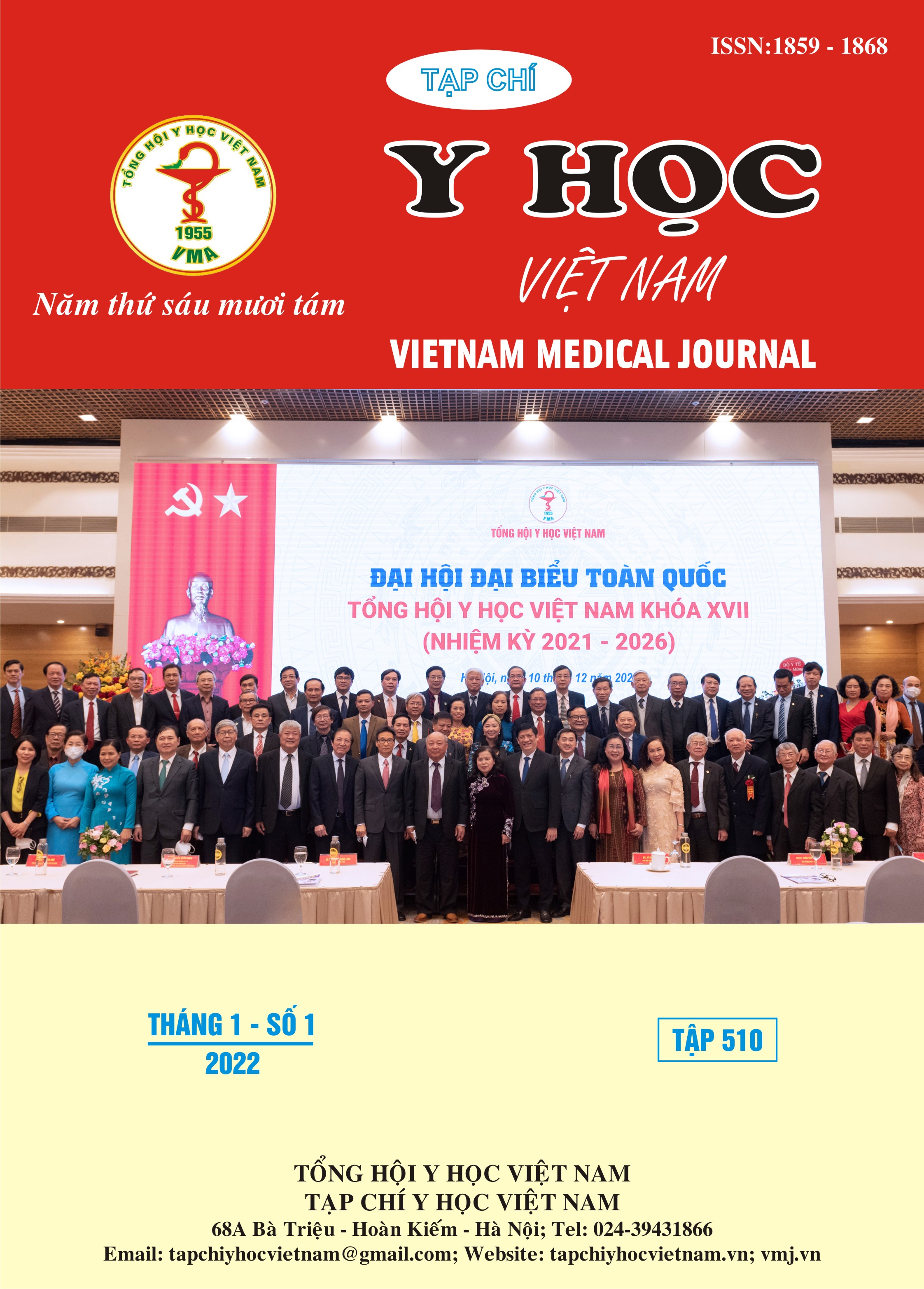IMAGING CHARACTERISTICS AND OUTCOME IN ISCHEMIC STROKE PATIENTS WITH ATRIAL FIBRILLATION
Main Article Content
Abstract
Background: Stroke is the third most common cause of death worldwide after focal ischemic heart disease and cancer. In general stroke patients, ischemic type accounts for 85%. Patients with stroke due to cardioembolic etiology tend to have worse prognosis for recovery. Atrial fibrillation is the most common cardiac arrhythmia. The most serious common complication of atrial fibrillation is arterial thromboembolism; the most clinically evident thromboembolic event is ischemic stroke. In Vietnam, there have not been any studies on magnetic resonance imaging and outcome of ischemic stroke in patients with atrial fibrillation. Objectives:
to describe imaging characteristics and outcome in ischemic stroke patients with atrial fibrillation. Subjects and methods: A prospective, descripive study . Result: infarction in blood supply territory of middle cerebral artery account for highest proportion (70,9%) to other arteries, with multi-focal infarction region in MRI (49,1%). Large hesmipherical infarction and hemorrhagic transfomation complication were predictors for poor outcome.
Article Details
Keywords
ischemic stroke, atrial fibrillation, image characteristic, outcome
References
2. 2020 ESC Guidelines for the diagnosis and management of atrial fibrillation developed in collaboration with the European Association of Cardio-Thoracic Surgery (EACTS) | European Heart Journal | Oxford Academic. , accessed: 18/10/2020.
3. Chu Bá Chung (2017). Nghiên cứu các yếu tố tiên lượng tử vong trên bệnh nhân nhồi máu não trong bốn tuần đầu. .
4. Nguyễn Duy Trinh, Lê Văn Thính, và Phạm Minh Thông (2015), Nghiên cứu đặc điểm hình ảnh và giá trị cộng hưởng từ 1,5 Tesla trong chẩn đoán và tiên lượng nhồi máu não giai đoạn cấp tính, Luận văn tiến sĩ y học, Đại học Y Hà Nội.
5. Wessels T., Wessels C., Ellsiepen A. và cộng sự. (2006). Contribution of Diffusion-Weighted Imaging in Determination of Stroke Etiology. American Journal of Neuroradiology, 27(1), 35–39.
6. Doufekias E., Segal A.Z., và Kizer J.R. (2008). Cardiogenic and Aortogenic Brain Embolism. Journal of the American College of Cardiology, 51(11), 1049–1059.
7. Nguyễn Bá Thắng (2015), Khảo sát các yếu tố tiên lượng của nhồi máu não do tắc động mạch cảnh trong, Luận án tiến sĩ Y học, Đại học Y Hà Nội.
8. Paciaroni M., Bandini F., Agnelli G. và cộng sự. (2018). Hemorrhagic Transformation in Patients With Acute Ischemic Stroke and Atrial Fibrillation: Time to Initiation of Oral Anticoagulant Therapy and Outcomes. J Am Heart Assoc, 7(22), e010133.
9. Dang H., Ge W.-Q., Zhou C.-F. và cộng sự. (2019). The Correlation between Atrial Fibrillation and Prognosis and Hemorrhagic Transformation. ENE, 82(1–3), 9–14.


